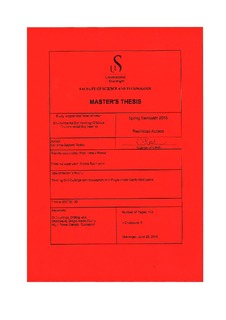| dc.description.abstract | The aim of the thesis was to evaluate the use of single-mode applicator in combination with susceptor technology for treatment of oil contaminated drill cuttings. Single-mode applicators allow samples to be exposed to high power density which increases the energy efficiency.
Oil separation was clearly enhanced with high power density for cuttings from Halliburton/North Sea. Less energy was used with high power density, where the result of OOC was determined to be 0,76%. For low power density, 2,24% OOC was achieved. This equals to a separation degree of 90,5 and 72,1, respectively, compared to initial OOC. The effect of susceptor was also tested on the Halliburton cuttings. The OOC was reduced to 0,16% after addition of MEG as susceptor and treatment in microwave.
More tests were conducted on a type of drill cuttings received from Canada. The effect of low and high power density, energy consumption, alternating cutting characteristics, susceptor quantity and dosing point was investigated in these experiments. The effect of high power density on oil separation was not evident without susceptor. The North Sea cuttings characteristics was to a high degree different from the Canadian cuttings. The best oil separation value for Canadian cuttings was 93,2%. This was an effect of using high power density, combined with dewatering in microwave before susceptor and salt was added. In some cases, 15% MEG showed to sufficient to remove oil below 1%, however some tests implied that increasing MEG concentration led to better oil separation.
The energy consumption was in general high for Canadian cuttings. Actions can be done to decrease the energy consumption, for example to pre-heat the susceptor and dose it on warm cuttings. Unfortunately, this was not included in this thesis and is still yet to prove. | nb_NO |
